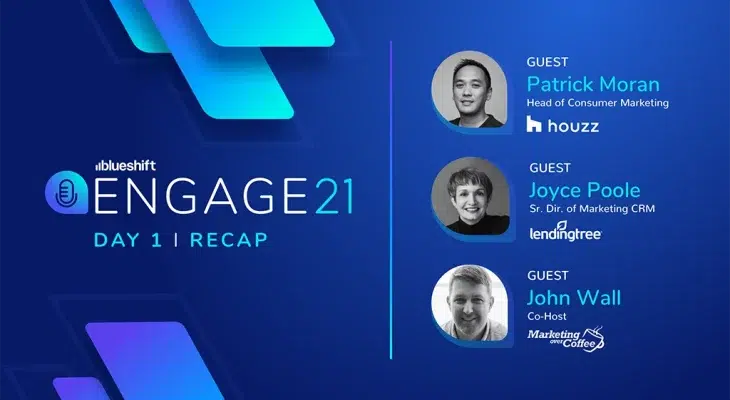How can experimentation drive more loyal and active customers?
Patrick gave us a good starting point for engaging customers between transactions:
“I think having a clear understanding of the magic moment, the Aha! moment, for whatever is the experience. There are a series of activities that lead up to that.” Driving engagement is strongly related to understanding the user interactions that lead them to the magic moment and improve them.
But for Joyce, a key to engagement is to clearly identify the period of transaction, which can be easier or harder depending on what you’re selling. But more important is what they do after the transaction and to be there and provide them with the appropriate type of communication to get them to come back.
Continuing on the topic of how experimentation improves the customer experience and drives loyalty, Joyce made an observation about the importance of understanding and differentiating customers even in broad groups. “Loyal customers” might be defined as a group, but inside that customer base there are some prominent segments that need to be treated quite differently.
Joyce: “I think that’s important to not think of everyone in broad groups. There are independent ways to think about loyal customers. To keep people engaged it’s important to understand their differences and give them the information that they’re seeking and that we hope, will lead to that additional engagement.”
And as for tips for best practices in their organization, all the speakers had one.
Joyce named the customer’s insights: “Customer’s insights are vital. If we really need to know what’s essential about our customers, let’s ask them. We spend a lot of time doing qualitative and quantitative research on what is the content that you want to know at a specific point in time. And that is an important step to do in order to guide you in your communication touches.”
Patrick talked about the capacity to uplift the middle customers: “In a lot of organizations I’ve been part of, if you take a hundred of your users, there’s usually twenty of them that are extremely engaged and twenty of them that are not engaged at all. The question is: how do you uplift that middle? I think a lot of that is about understanding the data between the very engaged cohort and the not so engaged cohort.” Understanding the middle ones is an effective strategy to drive active customers.
Some food for thought from the speakers
The key takeaways speakers left for the audience were short and on point.
- Joyce: “Test and retest. Keep testing. Today’s changing landscape requires you to continually test.”
- John: “Always be testing.”
- Patrick: “Focus on what you want to learn in order to impact the business.”



